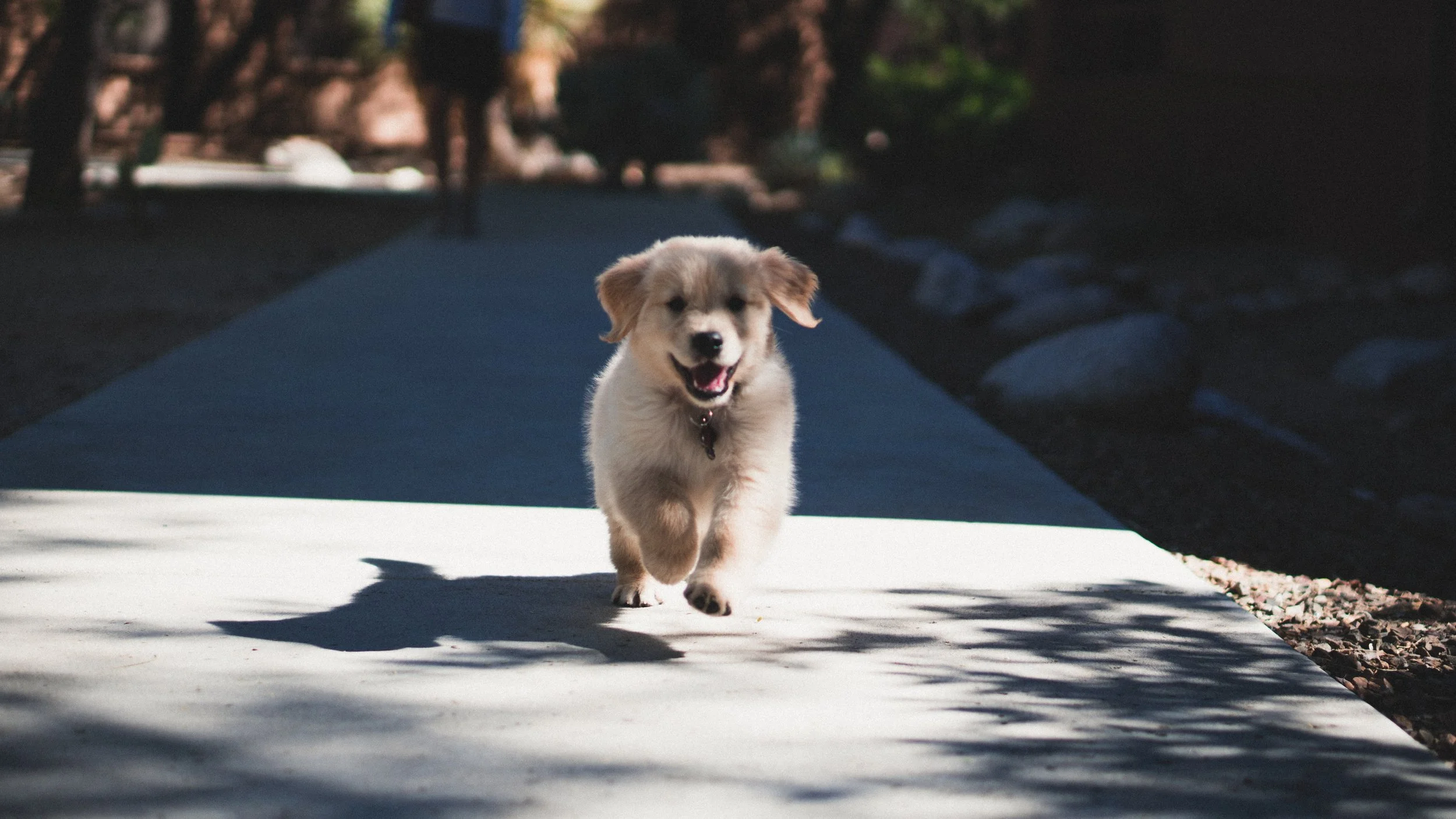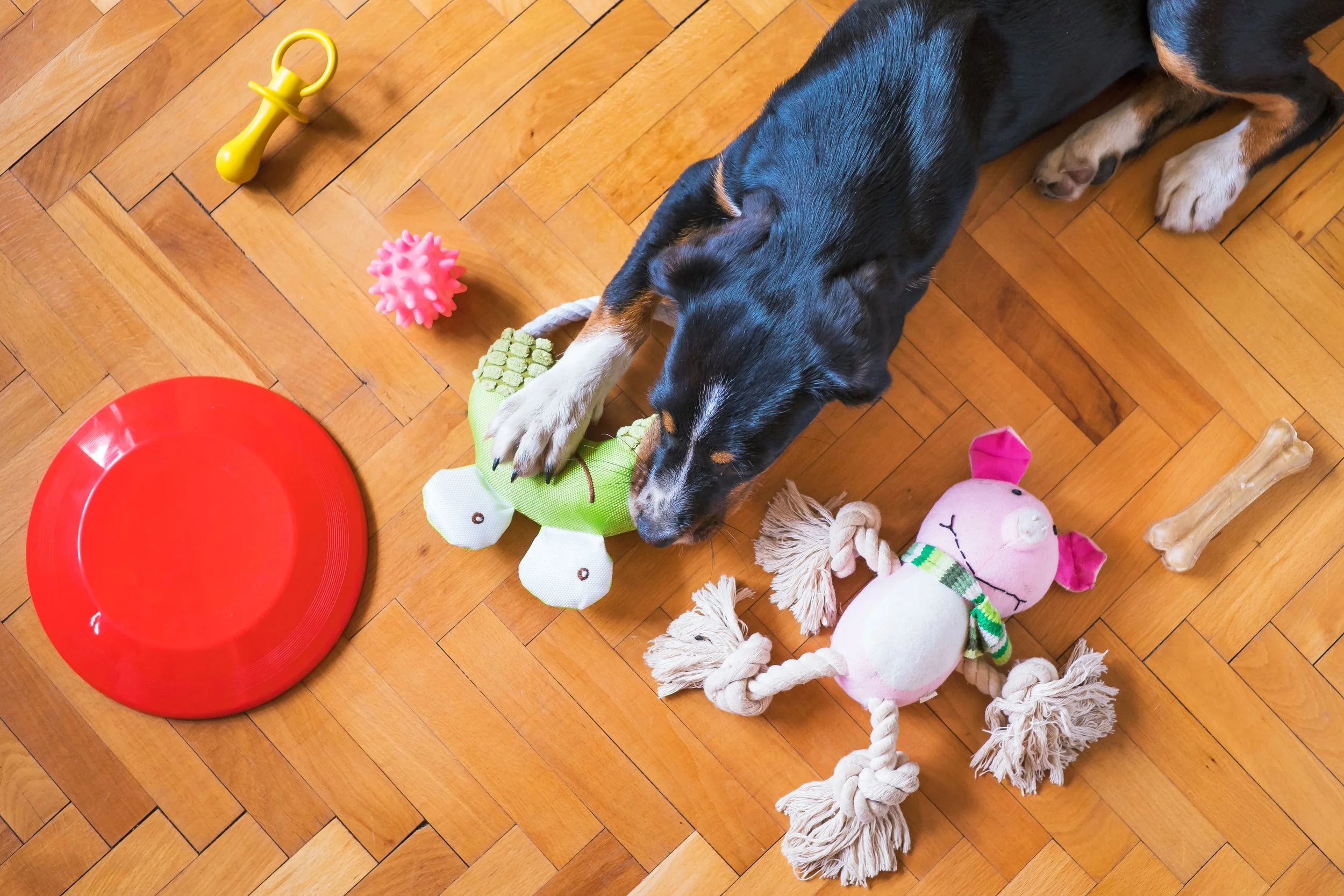Shelter Dog Series: Enrichment 101
99% of veterinary professionals think that increased enrichment could improve pets’ health. Pet parents often struggle to implement enrichment, even though it helps to decrease stress, thereby enhancing health outcomes. In fact, 43% of vets report that half of their dog patients need more enrichment.
Shelter environments tend to be crowded and chaotic, with limited budgets and overwhelming need, so it goes without saying that rescue dogs are an inherently stressed population. Stressed dogs are more susceptible to behavioral and health struggles, making them less adoptable. If you’re working with rescue dogs, it’s worth it to learn about how to implement enrichment. Let’s talk about what enrichment is and how it can be utilized in a shelter environment.
What is Enrichment?
Dogs are hard-wired to hunt, dig, and sniff, but the cushy domesticated life doesn’t provide a lot of organic opportunities for these behaviors. Dogs are given food in a bowl each day, are discouraged from digging lest they ruin their parents’ precious yards, and aren’t given many opportunities to sniff novel smells.
Enrichment is anything that enhances a dog’s quality of life by giving them opportunities to engage in these innate behaviors. Providing regular enrichment has a number of reported benefits, including:
Reduced stress
Decreased repetitive behavior
Improved cognition
Reduced vocalizations
Enrichment for Shelter Dogs
Dogs housed in single-dog shelter housing have been found to engage in repetitive behaviors, like circling and floor licking, which are indicators of chronic stress. According to animal behavior expert Laurie Lawless, “most shelter kennels are loud, smell like cleaning products, and are socially isolating. For Laurie, and other animal experts, the importance of enrichment in shelters cannot be overstated.
Enrichment techniques stand to significantly improve the livelihood of rescue dogs. In a study to determine rescue dogs’ reactions to enrichment protocols, researchers Megan Herron, Taylor Kirby-Madden, and Linda Lord split rescue dogs into an experimental group, which received enrichment, and a control group, which did not receive enrichment.
The experimental group received a daily food puzzle and training sessions twice a day. By the end of the experiment, these dogs consistently engaged in more desirable behaviors, like lying down and being quiet, and less undesirable behaviors, like jumping when meeting guests.
In another study that examined the effects of enrichment on a group of 10 dogs, the results found that enrichment caused “a significant increase in relaxation behaviors and a reduction in alert and stress behaviors.”
I know what you’re probably thinking: “This all sounds great, but if it’s hard for pet parents to implement enrichment in their households, it’s doubly hard to do so in a shelter environment.” We understand this struggle, and it’s true that rescue dog enrichment takes extra work. Let’s talk about some shelter-friendly enrichment strategies.
Implementing Enrichment for Shelter Dogs
For a technique to be considered “enrichment,” it needs to have an observable positive impact on an animal’s behavior. This is important to recognize, because a lot of factors influence a dog’s enrichment needs, like breed, age, health, and individual personality. For instance, Laurie has observed that “when we have dogs in the shelter that are under 3 years old… physical exercise is critical to meet the energy needs and prevent them from forming maladaptive behaviors from confinement and stress,” but an adult Maltese-mix will likely not need the same level of physical exertion.
Planning
Because every dog has unique enrichment needs, adequate planning is one of the most important steps when implementing enrichment for shelter dogs. Shelter staff should take what they know of each dog’s breed, age, health, and individual personality to develop a goal-oriented plan.
Laurie has also noticed that shelters often retroactively implement enrichment for already stressed dogs, and she recommends that shelters take a more “proactive approach, assessing the needs of each dog coming into their care and creating an enrichment plan at intake.”
Because enrichment doesn’t count unless there is an observable impact, you should be carefully monitoring each dog’s response to their enrichment protocol, adjusting where necessary based on your observations. Start slowly, learning about each dog and building their confidence as you work up to more complex strategies for long-term residents.
Lastly, enrichment shouldn’t be implemented sporadically or chaotically. Predictability is a great tool for stress reduction in shelter populations, so be sure to maintain a predictable enrichment schedule.
Targeted Enrichment
Enrichment techniques should target all of a dog’s senses. Ideally, you should be using a complex enrichment protocol that targets all of these senses while also providing social interaction and physical exercise. Dogs who are exposed to complex enrichment have been found to be calmer, quieter, and less likely to jump.
Sound
There’s also a lot to hear in a shelter. My human ears can sometimes get overwhelmed by loud barking and the sound of cage doors opening and closing, so I can only imagine what it’s like for rescue dogs’ super sensitive ears.
Playing music is one way to mask some of this noise – and to calm pups who are vocalizing due to stress. New age and classical music has been shown to be soothing to animals, so playing some tunes can help to provide some auditory stimulation.
Smell
Dogs have a powerful sniffer, and it’s important to let them use it. To make sure rescue dogs are getting to use their nose, try introducing a new scent each week using an essential oil diffuser. Some scents that have been shown to reduce stress in dogs include:
Vanilla
Coconut
Valerian
Ginger
Lavender
Another way to allow pups to utilize their noses is to take “sniff walks,” where they’re allowed to sniff to their heart’s content while getting the added physical and mental benefits of an outdoor walk.
Touch
Stimulating a dog’s sense of touch is a great way to kill two birds with one stone. Dogs love to be loved on by humans, so each dog should get daily tactile stimulation from staff and guests in the form of belly rubs, pets, brushing, or massaging. As a bonus, this also provides social stimulation.
This is where getting to know the unique needs of the rescue dogs in your care really pays off; by knowing each dog’s tactile preferences, you can be sure to provide the most enjoyable experience and avoid causing stress to pups who don’t like to be touched in certain places.
Taste
Novel tastes are another thing that can be really stimulating for dogs. Be sure to give treats daily, and switch up the flavors regularly to provide novelty. Bonus points if you provide treats in a Kong or puzzle toy, which provides mental stimulation and allows them to “hunt” for their food.
Social Stimulation
Research shows that dogs who are chronically restricted from social interaction experience heightened fearful behavior and changes to their hormonal and immune systems. In fact, Laurie thinks that social interaction is one of the most beneficial types of enrichment for rescue dogs. Rescue pups should be given regular opportunities to interact with guests, staff, and other dogs – when safe and appropriate. (pro tip: check out our Holiday Dog Introductions post for some techniques to safely introduce dogs).
Some social enrichment techniques that Laurie suggests include: “playgroups, one-on-one time, office time, scent work games, fetch or tug, and training games.”
If you’re struggling to implement an enrichment plan, it could be helpful to work with an animal behavior consultant who can help you to cater this advice to the unique needs of your animal shelter. Laurie Lawless is a dog behavior expert with over 13 years of experience working as a dog trainer and shelter expert. Check out the Laurie Lawless Shelter Behavior website to learn more about Laurie and access her consultation services.






